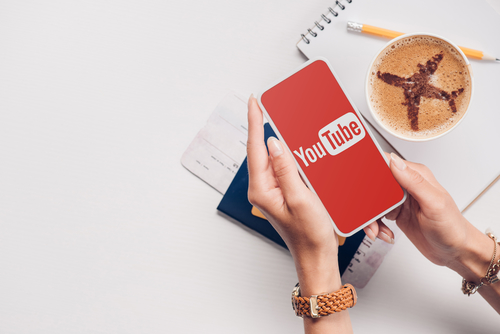
YouTube translations tools are crucial to expanding and growing your audience. Make sure you utilize these tools! You can do this by simply allowing YouTube to select a video from your channel to best suit the viewer using end screens, or you can pick any video or playlist from your channel. Increasing the accessibility of your channel could lead to growth in watch time, reach, and engagement in new markets. On average, two-thirds of a channel’s views come from outside the creator’s home country.
Check your YouTube Analytics Demographics report to see where your audience tunes in from. If you see a lot of watch time coming from countries whose residents speak languages other than your own and think your content would be interesting to people in other places, it could be time to try out the suite compiled of YouTube translation tools. You can add captions, subtitles, and translated titles and descriptions to your videos.
Closed Captions (cc) are written transcripts of a video in the language spoken that display on screen. They can increase your channel’s reach by giving viewers the option to read words instead of listening. This can be beneficial to audiences who are hard-of-hearing, who are watching in a loud environment or don’t want to turn the sound on. They’re easy to add to your channel. Auto-generated captions are also available in some languages and viewers can turn them on and off.
Subtitles are translations of captions. They offer audiences who do not speak the same language as a video the option to read a translation of the words spoken.
Translated Titles and Descriptions can lead to greater discoverability by viewers who speak other languages because they are indexed in search results. Translating your title and description works best when you have corresponding subtitles in the same language.
The chart below explains the options for implementing each type of translation tool:
You can also just check your YouTube Translations Report. Create a thank you translation video and give credit to the videos that people translate.
Community Contributions (found in the YouTube Translations & Transcriptions tab of Video Manager) lets you crowdsource, as well as caption and translate subtitles, titles, and descriptions from your YouTube community. This translation tool offers a scalable and free way to potentially reach a wider audience. You can enable Community contributions for your all videos on your channel in the Translations & Transcriptions tab in Creator Studio, by clicking on the gear icon. (You can also choose to enable this feature on individual videos too.) Once you’ve turned it on, community members who speak another language and want to help out can provide translations. It’s the easiest (and cheapest) way to add translated subtitles, titles, and descriptions. If you speak another language, try adding subtitles and translated metadata yourself.
When a YouTube translation has been submitted, YouTube automatically screens the submission for proper language match and to catch spam, bad words, and avoid submissions from those with a history of spamming. Good quality submissions get passed along to be manually reviewed by your community. After the translation has been screened, contributors will be prompted to cast a vote for it (instead of being prompted to contribute a new translation). If the translation is not up to their standard, contributors can mark a translation as incomplete, contribute improvements, or flag it as spam. When enough positive votes have been cast, translated content is automatically published. While auto-publishing saves you time, you can optionally monitor the process from the ‘In review’ tab. Here, you can manually check submissions in the review and approve or reject them.
Google Translate is integrated with the review to help you understand contributions in foreign languages. If you have a great relationship with your audience, consider asking them to contribute translations and transcriptions for your videos. In return for contributing to YouTube translations tools that get published, viewers (who have a channel) can opt-in to be credited in the video description with a link to their channel.
Tips on how to communicate with your translation contributors:
- Create a video explaining why you’re passionate about having a global channel and how community contributions work. Ask them nicely to try it out. Consider including YouTube’s Help Center article or video in the video description.
- Let them know how to reach out to you if they have questions or need help.
- Let your audience know they can get credit for contributions in the video description.
- View who contributes the most by looking at each video’s description.
- Add links to the videos you want contributions to. You can also get a link to the full list and promote it on social media.
- Find creative ways to thank them. Give a shout-out or make a thank you video.
- Be grateful for their time, language skills, and help!
People tend to think they can grow their channel completely on their own. Nope! While it does take a lot of hard work and time on the owner’s end, one needs steady traffic and a loyal fanbase to keep breathing life into their content. Don’t forget about your subscribers! You treat them well, and they’ll treat you well right back.
Do you have any stories about some great relationships you have built with some of your subscribers? Or any questions regaring YouTube translation tools? Let us know in the comments below!

